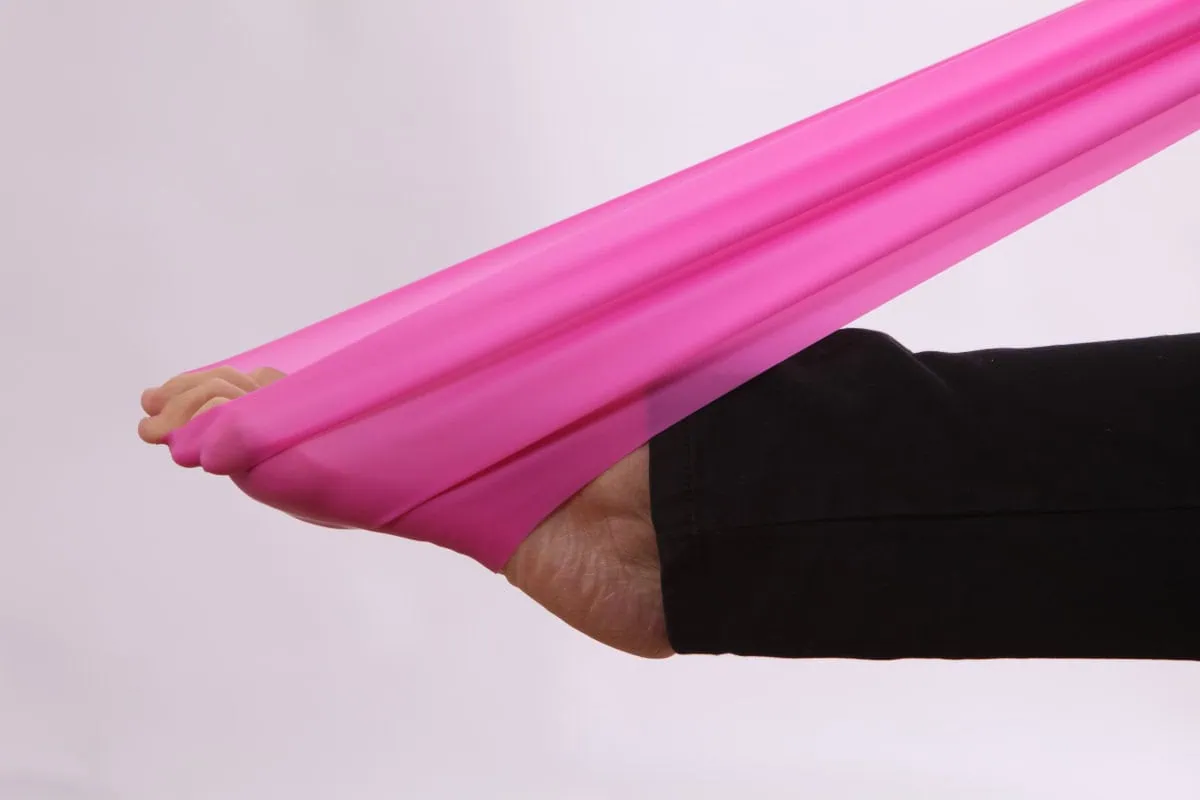
Pain on the bottom of the heel is possibly the most common foot complaint that a foot specialist sees. There are many options to reduce or reverse these symptoms and the purpose of this blog is to offer stretching options that you may want to consider. The most common cause of heel pain is a problem called plantar fasciitis. The plantar fascia is a tight connective tissue that starts at the ball of the foot and extends to the bottom of your heel. With every step that you take, as the arch flattens, it is thought that the fascia is pulled, and this creates stress where it attaches to the heel. In younger people, the fascia tends to be more elastic and more stretchable, however, as we get older it is thought to lose a lot of its elasticity. The idea is that with a lack of flexibility, it is pulling from your heel, and microscopic tears may be occurring. That is why for many of you searching for solutions to your plantar fasciitis, stretching is brought up as a solution.
This blog intends to introduce you to some basic plantar fasciitis stretching exercises that you may perform. I will also explain why you may want to reconsider this option, especially if you don’t see progress, and also explain why it may make the problem worse and could be a dead-end solution. I will offer scientific reasons for avoiding plantar fasciitis stretching in certain cases.
The basics of the heel pain
There are two things to consider when using stretching to reduce or eliminate heel pain:
- The plantar fascia. The plantar fascia is a very strong tissue often referred to as a tendon or it has been described as the ligament that connects your heel to the ball of your foot, but it is simply a tight connective tissue (fascia). The theory is if you can stretch it, it will reduce the irritation that is created at the bottom of your heel where it inserts into your heel bone (the calcaneus). So, many stretches are focusing on stretching the fascia specifically.
- The Achilles tendon. Other stretching exercises are targeted to the calf muscles which include the gastrocnemius muscle which is the large muscle in your calf but also the soleus muscle which is a thinner muscle deep beneath the gastrocnemius muscles. Both of these muscles attach or form the Achilles tendon. If either one of them is tight that will reduce the amount of upward motion at your ankle joint, this is called dorsiflexion. If you have tightness in the calf area (the Achilles tendon), then that lack of upward mobility at the ankle will cause more strain on your fascia. If you have an extremely tight Achilles tendon, your heel will lift off the ground earlier as you propel forward because of restricted motion at your ankle therefore causing more pull on the fascia. So, stretching the calf muscles is thought to be helpful.
Stretching the plantar fascia
- Stretch On a Step. Using stairs is a useful exercise to stretch both the fascia and the Achilles tendon. To do this stretch, stand facing the stairs with the ball of both feet on the edge of the step and the heel not in contact with the step. You can do this stretch with both feet or with one foot at a time and you may need to use the handrail if you are using one foot. The idea is with your knee extended and not flexed, allow your heel to drop down and this can provide stretching for the fascia and the Achilles tendon. You could do this with 15 repetitions per side two times a day.
- Frozen Water Bottle Stretch. This stretch involves using a frozen water bottle that you put on the floor and while you sit in a chair you gently roll the water bottle on the arch of your foot. Using the ice in the water bottle and the rolling technique may gently pull on the fascia to stretch it and reduce inflammation of the fascia.
- Standing Calf Stretches Against a Wall. While standing facing a wall, put both hands on the wall, and with the foot needing to be stretched furthest away from the wall, lean forward with the affected leg straight so that you are not bending at the knee and do this until you feel a stretch. The opposite knee will be flexing as you lean forward towards the wall. It is important to use proper technique when doing this by keeping your knee straight it creates more stretch of the gastrocnemius muscles compared to the knee being flexed. Also, your foot must be facing directly straight and not pointing outwards because with it pointing outwards, there may be more tendency for the arch to flex or bend thus reducing the stretch in your calf area.
Exercises for plantar fasciitis
When seated in a chair, place a towel on the floor and use your toes to grab the towel doing multiple repetitions. This is thought to reduce stress on the fascia by increasing strength in the muscles that form your arch.
Current science to challenge the reasoning behind plantar fasciitis stretching exercises being the solution
Why does healthcare continue to claim that the fascia is inflamed and keep using the term plantar fasciitis when this has been disproven?
Several years ago, Dr. Harvey Lemont did a study where he studied the plantar fascial tissue for evaluation when he did surgery on 50 subjects. Only one of those specimens showed the fascia was inflamed and 49 showed that the fascia was tissue that was breaking down (plantar fasciosis). This supports the idea that microscopic tears are taking place and supports the fact that the use of human cellular tissue products are far superior treatment than using anti-inflammatories such as oral medications or cortisone injections. This would also argue that stretching may not be a good idea as you’re damaging the tissues even more and causing more tearing. Also studies out in Europe support the success of regenerative medicine versus cortisone injections. Our patients appreciate the success they’ve had with the stem cell options.
Patient Testimonial
Orthotic Devices for plantar fasciitis
Orthotic devices have been used as one of the primary solutions for chronic heel pain for foot and ankle specialists for many years. The orthotics do nothing to stretch the fascia but in fact reduce the pulling of the fascia from the heel.
In summary, it has been this doctor’s experience that plantar fasciitis stretching can be a bad idea. It may give you some relief but does not reach the point of actually solving the problem. People simply manage the condition and this may greatly limit what they do. It never gets them to fully resolve it. Finally, our primary goal is to permanently resolve the problem, and we have found that the best strategy is to structurally reduce the pull of the fascia from the heel. The evidence is there to support that microscopic tears occur while stretching. Using human cellular tissue products (regenerative medicine) to repair the damage brought on by the tearing of the fascia can reverse the damage. So, consumers beware! If you are frustrated with how little stretching is helping you or it is making it worse, consider the treatment that we offer that is more science-based.
Call us today at our Fort Collins location (970) 329-8158, Broomfield location (303) 997-2795, Surgery Center (970) 329-8158, or use our online scheduling system to book your appointment.


